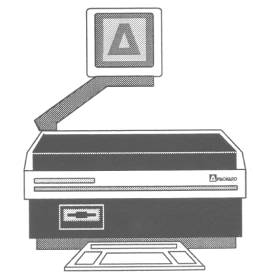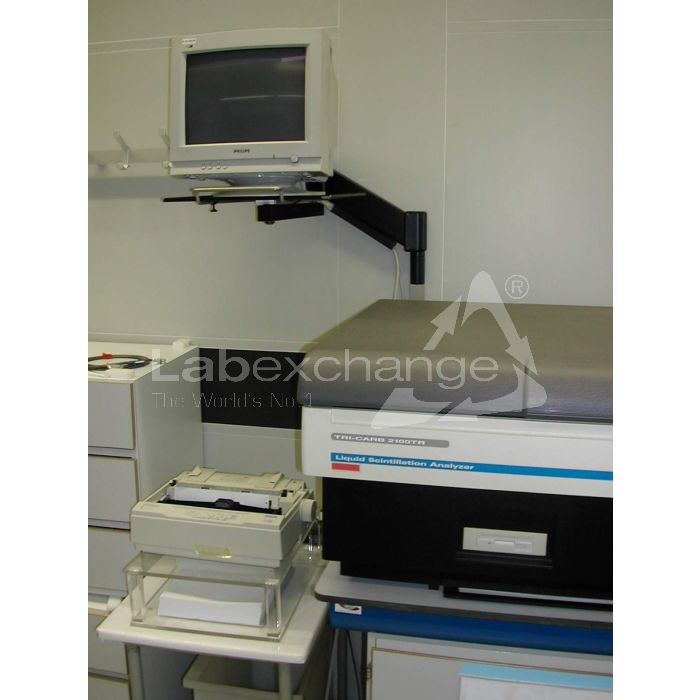Packard Tri-Carb 2100 TR
| Objektnummer | B00018508 |
|---|---|
| Seriennummer | 018508 |
| Nome oggetto | Packard Tri-Carb 2100 TR |
| Stato | Archived Product |
Gruppo prodotti: Contatoti Beta-Gamma
Status, terms of delivery and payment
Verification of devices
The second-hand devices are verified by Labexchange Service GmbH before delivery. You are receiving only fully functional devices.
Dispatch time
The stated dispatch times are the shortest possible ones for each article. The effective dispatch times can vary. The effective dispatch times will be stated in the order confirmation.
As a matter of principle, we are offering collective deliveries. The shipping time is calculated based on the position with the longest lead time. A partial delivery is possible on explicit request.
Shipping methods
Parcel services, forwarding agencies, self-pickup, delivery by Labexchange fleet.
Delivery information
Prices exclude shipping costs. Stated shipping costs are to be expected. Deviations are possible. If transport costs are not specified, please ask separately for them.
The stated transport and packing charges apply to the most favorable route if transport and are to be understood as subject to verification due to unexpected cost increases. By reason of unpredictable events, cargo rates and delivery times can change at any time and therefore have to be adapted to the recent situation. Import formalities and possible customs charges will be borne by the purchaser. Incoterm coding according to Incoterms 2010: For persons who collect the devices themselves: EXW, for dipatch by sea: CFR, by air freight: CPT, other shipments: DAP. Note for international shipments: A proof of preference/EUR1 will not be issued by us. When self-collecting/ordering EXW from countries within or outside the European Union, 16% VAT will be retained as a deposit until we have received the corresponding confirmation of arrival/bill of delivery from the buyer.
Terms of payment
We do not accept payment by letter of credit, PayPal, etc. In each case the invoice amount is payable without deduction. Discount is not granted.
|
Country |
Possible payment methods |
Comment |
|
DE, AT, CH |
Payment by invoice, payment in advance, payment by credit card |
Payment by invoice is only possible for corporate clients. |
|
NL, BE, LU |
Payment by invoice, payment in advance, payment by credit card |
Payment by invoice is only possible for corporate clients |
|
Other countries |
Payment in advance, payment by credit card |
|
Our General Terms of Sale, Delivery and Payment are valid and are available for download here.
The goods are offered subject to prior sale.
Definition of status
All articles are used articles, except an article is listed especially as a new device.
|
Status |
Condition |
Comment |
|
Immediately available |
Used | The article is fully functional and in impeccable condition. It can be shipped immediately. |
| In stock |
Used |
The article is on stock. Our service technicians will verify the article before delivery. You are receiving only a fully functional article. |
|
Published |
Used |
The article is still with the provider. After your order the article will be purchased and verified by us before being shipped to you. A certificate of operativeness as well as a service report are included in delivery. |
|
New device |
new |
The article is brand new and unused. Regarding new equipment the guarantee/warranty conditions of the corresponding manufacturer apply. |
|
Labprocure |
Used |
Labprocure GmbH, as the advertiser, is responsible for the content of this device offer. Labprocure assumes liability for the offers advertised here and for the photos and offer texts included. Labprocure GmbH, Bruckstraße 58, 72393 Burladingen. |
Your system is a triple region, computer-based, multiuser unit that provides the means for quantitative detection of beta radiation, other forms of radiation, and various types of luminescence. The system uses cassettes which may be preprogrammed to select any one of the unique user programs stored in system memory The cassettes are also marked for positive sample identification.

Illustration of the system
System Purpose
The system is designed for quantitative detection of beta radiation, other forms of nuclear radiation and various types of luminescence. A printed record of all such measurements with automated sample changing, batch definition, data accumulation and a real time display of all counting results is provided by the system.
System Description
The system functionally consists of the following major areas:
1. Scintillation detector
2. Pulse analysis
3. Sample changer
4. SpectralyzerTM spectrum analyzer
5. System control
6. Conversation
7. Display
8. Data reduction
9. Data output
10. Computer
Scintillation Detector
The detector is located below and to the rear of the sample changer. Samples are lowered into the detector. The detector consists of two opposed bi-alkali high performance photomultiplier tubes (PMT) coupled to an optical chamber. Shielding consists of a light-tight detection chamber, magnetic shielding and approximately 2" of lead to reduce the effects of external radiation. The detection chamber also contains a reflector to aid in more efficient collection of light from the Sample.
Pulse Analysis
The sensitivity of detectiog radioactive events is limited by the presence of background radiation. Based on multichannel pulse height analysis and Time-Resolved Liquid Scintillation Counting (TR-LSC), the system is able to discriminate some background radiation from sample decay events. Due to their specific radiation characteristics, background pulses show a different after pulse distribution that can be discriminated from beta pulses through time-resolved liquid scintillation counting.
Sample Changer
The automatic sample changer provides the means for sample movement to and from the detector. Samples are carried in cassettes to a load station; where they are lowered into the detector. Sample changer motion is controlled via the system keyboard. Sample cassettes are transported on paired fabric belts, one pair for bringing the cassette to the detector and the other for carrying the completed cassettes away from the detector.
Lateral transport is accomplished by rotating drive pins that engage the cassette being indexed at either end of the sample changer: Both pairs of transport belts are driven synchronously in either the forward or reverse direction. The lateral drive pins are asynchronous in either the forward or reverse direction. Cassettes loaded as a group remain grouped unless manually moved, and unoccupied positions in a cassette are automatically bypassed.
The optional varisette sample changer allows the convenience of using both standard and small vials in an optimized cassette system without adapters. Maximum sample capacity for the sample changer is 408 standard vials or 720 small vials when not intermixed.
Spectralyzer TM Spectrum Analyzer
The coincident summed pulses from the detector system are accumulated in a spectrum analyzer circuit and stored. Linear amplification and linear storage are used to provide maximum stability. Data are accumulated in the Spectralyzer spectrum analyzer until a terminator is reached.
Three regions are set over the stored spectrum to form regions of analysis. The regions are automatically defined in the preset conditions of 3 H, 14 C, 32 P and 125 I in single label measurements, or 3 H/ 14 C, 3 H/ 32 P and 3 H/ 125 I in dual label measurements. User determined regions can be set by defining the energy limits of the radionuclide or by empirically determining the settings. The entire spectrum of the radionuclide accumulates during the sample measurement. The system's design permits the region to be determined during the sample measurement without loss of time or counts.
The Spectralyzer spectrum analyzer provides a method of efficiency determination. A spectral index of the sample (SIS) is calculated, which is related to the quenching of the sample.
Using the external standard, the Spectralyzer unit analyzes the spectrum, performs a reverse spectrum transform (RST) and produces a transformed spectral index of the external standard (tSIE). This monitors the degree of quenching in the scintillation solution and can compensate the regions for automatic efficiency control (AEC).
The high resolution Spectralyzer spectrum analyzer stores the spectrum data in 4,000 linear channels for visual presentation, region optimization, pattern recognition, vector qualitative analysis, spectrum unfolding, time-resolved spectrum analysis, reverse spectrum transformation, Direct DPM calculation and efficiency tracing.
System Control
The on-board computer controls all instrument functions. The sample changer advances until a protocol plug is sensed, at which time all parameters are recalled from the system disk for the measurement of the sample batch. The only user requirement, if protocols have been previously defined, is loading and unloading sample cassettes.
The keyboard is used to manually operate and converse with the system. During sample measurement the spectralyzer spectrum analyzer stores and analyzes the detected events from the sample and computes the data requested by the user. Depending an optional equipment, 15, 30, or 60 protocols can be defined and stored in the system.
Conversation
Unless it is necessary to define, edit, copy or delete a protocol, it is not necessary to initiate conversation for Sample measurement. Conversation, when necessary, is initiated via the keyboard by selecting the appropriate function key. Defining or editing a program is made simple with cursor control keys that allow the operator to enter/change a response to any question within the program and in any order. Unanswered questions are assigned preset values.
All defined user protocols can be listed for hard copy reference. Protocol headings can be identified by a name, while additional descriptive information can be stored into a fifty-character-long alphanumeric string.
Display
A CRT display is used for conversation with-the system and display of counting data. The normal display indicates the sample number, time, cpm or dpm, and 2 sigma percent deviation of the counts in each of the counting regions of the sample being counted. It also displays a list of protocol numbers and names with an indication of the active protocol and any protocols which have completed the programmed count cycles. The CRT is also used to view a spectrum, quench curve, or decay display.
Data Reduction
The system provides automatic calculations for cpm, automatic background subtraction, averaging, percent of standard, low count rate rejection, floating decimal point readout, result normalization, decay computations, user-defined equations, and single and dual label half-life correction Direct DPM and Efficiency Tracing DPM. The user selects the data reduction requirements as part of the initial protocol definition. Additional data reduction software options are available for single and dual label DPM, RIA, receptor assay applications, histogram and integration. The user can even add his own unique data reduction software to the system.
Data Output
Spreadsheet formatting of the parallel printer output provides format and calculation control over printed results. The printout sequence of the data can be defined per user protocol by selecting data cells of the spreadsheet matrix. Mathematical formulae can be applied on the different cells to customize the data.
Computer
The system is equipped with a built in computer, graphics adapter, a clock/calendar with battery support, serial communications and parallel printer ports with spooler.







